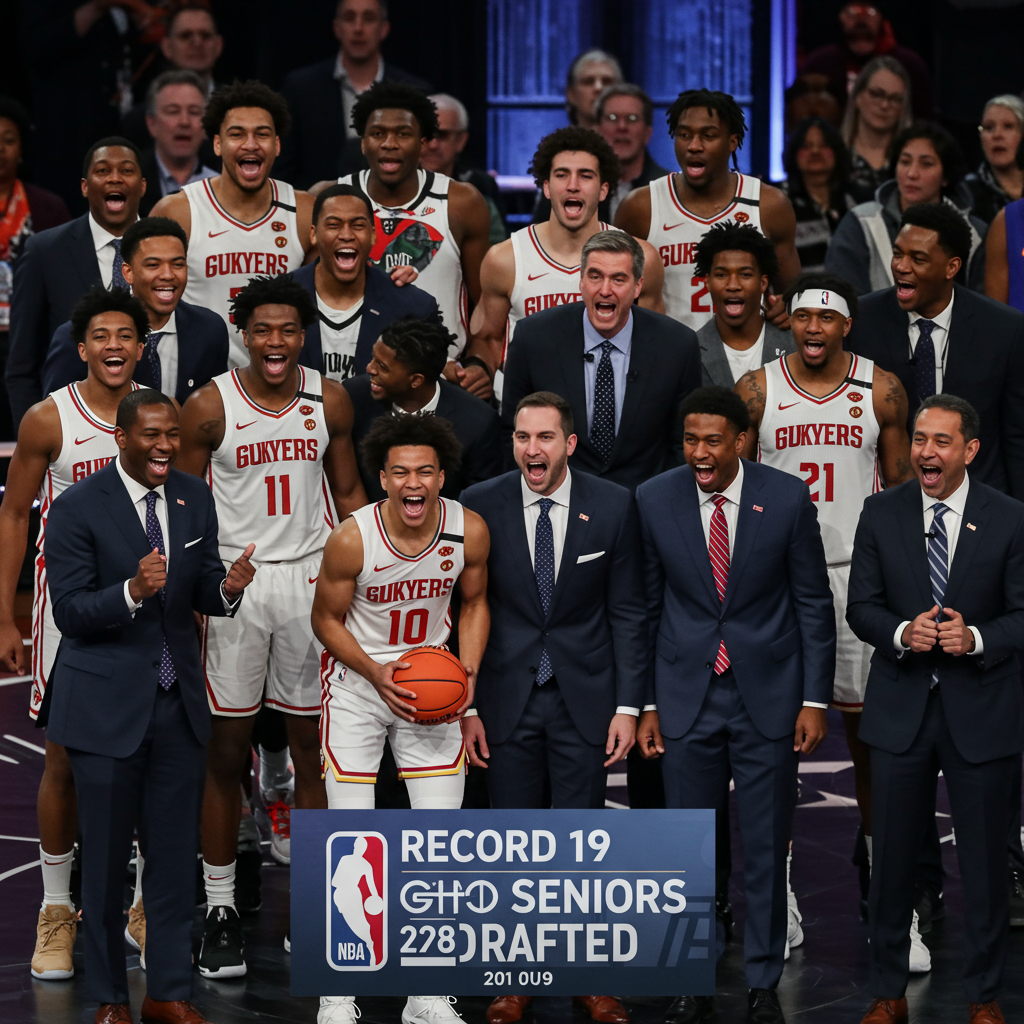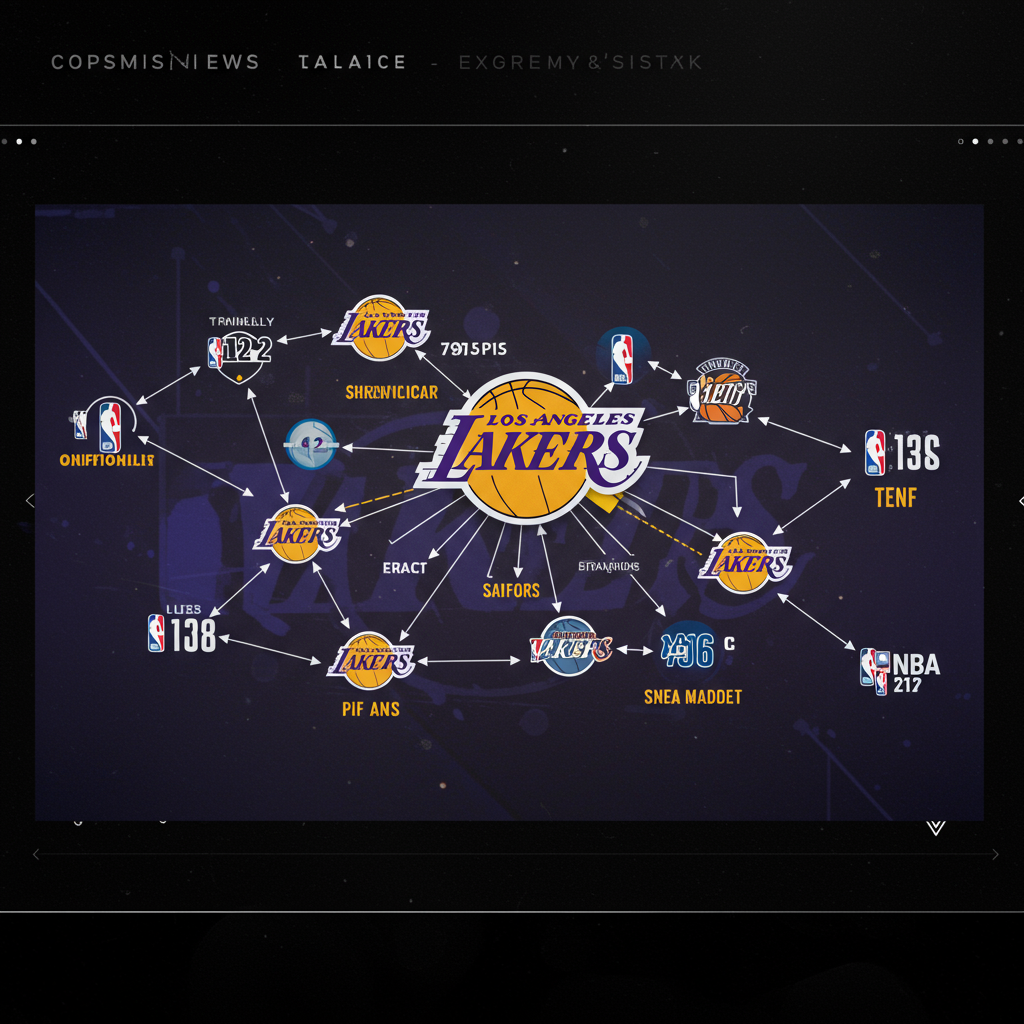The 2025 NBA Draft etched a new mark in its history books during the second round, highlighting a significant shift in the league’s pipeline for late-round prospects.
A record 19 seniors were selected among the final 29 picks, the highest total since 2004. This unprecedented number points to evolving dynamics within college basketball and the draft process itself.
The NIL Effect: How College Incentives Shaped the Second Round
This surge in senior selections isn’t a random anomaly. A primary driver behind this trend is widely attributed to the significant Name, Image, and Likeness (NIL) offerings available to college athletes.
Reports indicate that substantial financial incentives are encouraging talented underclassmen, particularly those not projected as sure-fire first-round picks, to remain in college and further develop their game while earning income. This has effectively reduced the pool of early-entry candidates typically available in the second round.
With many high-profile prospects like Tahaad Pettiford, Labaron Philon, Boogie Fland, and Neoklis Avdalas choosing to stay in school, the draft landscape, especially on Day 2, was altered. This created increased opportunities for older, more experienced college veterans who had exhausted their NCAA eligibility or whose draft stock benefited from a less crowded field of younger prospects.
Experienced Veterans Seize the Opportunity
The unique circumstances allowed seasoned players who might have faced uncertainty about being drafted in previous years to earn their shot at the next level. While not all seniors were drafted, the numbers demonstrate a clear path being forged for this demographic.
Several veteran guards and wings saw their names called, providing teams with players who often bring maturity, defined roles, and experience against high-level competition.
Jahmai Mashack (#59): A 22-year-old guard known as an elite perimeter defender. While his offensive game, particularly shooting, needs development, his defensive intensity and potential utility earned him a late pick, likely signaling a potential two-way contract opportunity where his defensive upside can be explored.
Max Shulga (#57): At 23, Shulga provides a combination of proven college shooting (a “sniper” from three) and toughness as a point-of-attack defender. While questions remain about his size and strength translating to consistently handling the ball at the NBA level, his track record as an efficient shooter and winning player made him an appealing second-round target.
Will Richard (#56): Another 22-year-old guard described as potentially “slept on,” Richard offers a versatile “jack-of-all-trades” skillset. He provides just enough shooting, defense, and transition energy to make him a viable candidate for a two-way contract, offering a solid foundation for development.
John Tonje (#53): A 24-year-old guard, Tonje’s college game relied heavily on a physical style that analysts questioned for its NBA translation. His path to the league likely hinges on developing into a nearly elite shooter, a possibility hinted at by his strong free-throw percentages. His ability to hit open shots and improve defensively will be crucial.
- Taelon Peter (#54): A fifth-year senior, Peter stands out as a “genuine sniper,” leading college basketball in true shooting percentage. While his defensive limitations were significant in college, his high-level efficiency and off-ball movement make him an intriguing developmental bet, likely on a two-way deal.
- www.si.com
- www.nytimes.com
- www.on3.com
- www.nytimes.com
- www.nba.com
Adding to the mix, 7-footer Amari Williams (#46), who turns 24 in January, represents the older, experienced big man finding a place. Described by the Celtics (who traded down to select him) as one of the best passing bigs in college for years, Williams combines elite rebounding, vision, and physical tools. His high basketball IQ and unique statistical profile (only the second SEC player with 375+ points, 300+ rebounds, 100+ assists, 40+ blocks, 20+ steals in a season) make him a potentially safe bet for Boston’s system, perhaps even factoring into their center rotation quickly given his age and polish.
This strategic approach was exemplified by teams like the Boston Celtics, who traded down from pick #32 to acquire #46 and #57 (Williams and Shulga), reasoning that the talent deeper in the second round, including these experienced players, offered comparable value while allowing them to accumulate future assets.
The Road Less Traveled
Despite the record number of seniors drafted, the path to the NBA remains challenging. Several prominent seniors still went undrafted but quickly found opportunities as free agents. Big East Player of the Year RJ Luis Jr. signed with the Utah Jazz, while 2024 Pac-12 Player of the Year Caleb Love inked a deal with the Portland Trail Blazers. These players will look to prove themselves in the Summer League and training camps.
Looking Ahead
The trend of college veterans benefiting from the evolving draft landscape, heavily influenced by NIL’s impact on underclassmen decisions, is likely to continue. The 2025 NBA Draft’s second round set a precedent, suggesting that future drafts may see more seasoned prospects vying for and earning their spot at the next level, potentially adding depth and experience to upcoming rookie classes.


